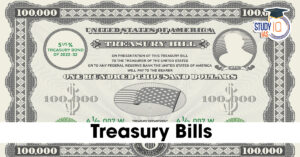Table of Contents
Increased Tax to GDP Ratio
Context: India’s tax-to-GDP ratio is expected to hit a record high of 11.7% of GDP in 2024-25.
Reasons For Increase
- Growth in Direct Taxes:
- Increased collections: Direct taxes like income tax and corporate tax are expected to grow from 6.1% of GDP in 2022-23 to 6.7% in 2024-25, contributing significantly to the higher ratio.
- Policy changes: Initiatives like reduced corporate and personal income tax rates and a new tax regime with higher tax-free income thresholds might encourage more taxpayers to opt for it, boosting collections.
- Stable Indirect Taxes: While direct taxes see growth, indirect taxes like GST are expected to remain stable around 5% of GDP. This consistency contributes to the overall rise in the tax-to-GDP ratio.
- Economic Growth: As the Indian economy grows and per capita income increases, historical data suggests a natural rise in tax-to-GDP ratio. This trend is expected to continue, with India being a developing nation.
- Improved Compliance: The government’s efforts to streamline the tax regime and reduce intrusive enforcement measures could lead to improved compliance, contributing to higher tax collections.
Potential Benefits
- Increased Government Revenue: Higher tax collections enable investment in infrastructure, education, healthcare, and social welfare.
- Reduced Fiscal Deficit: Narrowing fiscal deficit through increased revenue reduces reliance on borrowing.
- Greater Equity: Direct taxes like income tax promote fairer distribution of tax burden compared to indirect taxes like GST.
- Stable and predictable tax regime attracts investments, fostering long-term economic growth.
What is Tax-to-GDP Ratio?
The Tax-to-GDP ratio measures the proportion of a country’s tax revenue about its Gross Domestic Product (GDP). It is a crucial economic indicator reflecting the government’s fiscal capacity. A higher ratio indicates a stronger ability to generate revenue. In India, the recent 15-year high of 6.11% in FY23 suggests improved tax compliance and collection efficiency, signaling positive economic health. This ratio is instrumental in assessing a country’s fiscal strength and its capacity to fund public services and initiatives.
| Term | Definition |
| Tax Revenue | The total amount of taxes collected by the government. |
| GDP | Gross Domestic Product, the total value of all goods and services produced within a country’s borders. |
| Tax-to-GDP Ratio | The percentage of Tax Revenue in relation to GDP. |
We’re now on WhatsApp. Click to Join
Historical Context of Tax-to-GDP ratio
The last time India recorded such a high direct tax-to-GDP ratio was in 2007-08, where it stood at 6.3%. The current figure of 6.11% reflects the share of taxes in the country’s overall economic output. A low tax-to-GDP ratio typically signals untapped economic activity and fewer contributors to the tax revenue, making this recent upswing a significant achievement.
Direct Tax Collections Soar
The data highlights that direct taxes collected are estimated to be Rs 16.6 lakh crore in FY23, constituting a substantial 54.6% of the total tax collections amounting to Rs 30.45 lakh crore. Corporate tax and personal income tax contribute significantly to this direct tax collection, marking a noteworthy shift in the composition of India’s tax revenue.
The surge in direct tax collection is even more pronounced when looking at the numbers over the past decade. From Rs 6.38 lakh crore in 2014-15, the direct tax collection has nearly doubled to an estimated Rs 16.6 lakh crore in 2022-23. This significant growth underscores the effectiveness of tax policies and administration in boosting revenue.
Expanding Taxpayer Base
India has experienced a commendable expansion in its taxpayer base, with the total number of taxpayers surpassing 9.37 crore in the fiscal year 2022-23. Among these, individual taxpayers constitute 95%, totaling around 8.9 crore, while the remaining contributors are Hindu Undivided Families (HUFs). The growth in the number of individual taxpayers has been particularly impressive, increasing by almost 80% from 4.95 crore in 2013-14 to 8.9 crore in 2022-23.
| Year | Tax Revenue (in trillions) | GDP (in trillions) | Tax-to-GDP Ratio |
| 2021 | 15 | 100 | 15% |
| 2022 | 18 | 110 | 16.36% |
| 2023 | 20 | 120 | 16.67% |
The increase in the taxpayer base suggests a positive shift in the culture of tax compliance among both individuals and entities. This widening base is crucial for sustaining and further boosting direct tax collections.
Record High in Income-Tax Returns
The data reveals that the number of income-tax returns filed in the last financial year has reached its highest since the financial year 2013-14, with over 7.40 crore returns filed. This milestone indicates a growing trend of individuals and businesses fulfilling their tax obligations, contributing to the overall increase in direct tax collections.
Efficiency in Tax Collection Process
Apart from the notable increase in tax revenue, there is evidence of an enhanced efficiency in the tax collection process. The cost of collection of taxes has decreased to 0.51% in the financial year 2022-2023, compared to 0.53% in the previous fiscal year. This reduction in collection costs is indicative of a streamlined tax administration, reducing the burden on both taxpayers and the government.
India’s achievement of a 15-year high in the direct tax-to-GDP ratio signifies a positive trajectory in its fiscal landscape. With increased tax compliance, a broader taxpayer base, and improved efficiency in tax collection, the country is poised for sustained economic growth. The challenge now lies in consolidating these gains, further enhancing tax policies, and fostering a culture of responsible fiscal citizenship to ensure a robust and inclusive development path.
Tax-to-GDP Ratio UPSC
India’s direct tax-to-GDP ratio has reached a 15-year high of 6.11% in FY23, showcasing increased tax compliance and fiscal efficiency. This surge, last seen in 2007-08, signifies a positive economic trend. Direct tax collections, estimated at Rs 16.6 lakh crore, constitute 54.6% of total tax collections, with corporate and personal income tax playing a significant role. The taxpayer base has expanded impressively to over 9.37 crore, with individual taxpayers rising by 80%. Record-high income-tax returns and an efficient tax collection process further contribute to India’s positive fiscal landscape.


 Out-of-Pocket Health Expenditure, Reason...
Out-of-Pocket Health Expenditure, Reason...
 Treasury Bills (T-bills): RBI Cuts Holdi...
Treasury Bills (T-bills): RBI Cuts Holdi...
 Fisheries Sector in India, Current Statu...
Fisheries Sector in India, Current Statu...

























